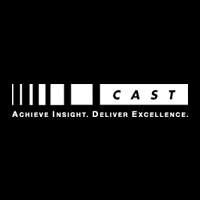Outsourcing Transparency Movement will benefit the channel

Says CAST
The channel could benefit greatly from the Outscourcing Transparency Movement, CAST has said.
According to the company, CIOs are beginning to question their spend on outsourcing, which the company says is on average around 20 percent of an IT budget. It said this was, and would continue to have a knock on effect on the technology industry with vendors being forced to raise their levels of transparency and quality.
Jay Sappidi, senior director of CAST research labs, told ChannelBiz that the outsourcing transparency movement was important for the industry because the IT that enabled more businesses was becoming increasingly complex.
“In most sectors, the key business applications have to be custom developed to suit specific business designs and competitive requirements,” he said.
“Over time, these systems grow with every new requirement, they are designed by many teams, and many developers who touch the code in these applications are outsourced to many locations around the globe. Most teams rely on a combination of talented architects, some code reviews and a lot of performance testing to maintain structural quality of their systems.”
He pointed out that because these methods are all insufficient -a typical business system will have more test paths than stars in the universe – they are partly relying on a fourth contributor, which he described as “dumb luck.”
“Judging by the increasing rate of headlines we’re seeing about technical glitches and security hacks, luck is running out,” he added.
He said that as a result businesses should seriously consider looking at the Outsourcing Transparency Movement.
“Any business that has a risk management policy needs to manage the structural risk in the construction of their core business applications,” he told ChannelBiz.
“Proactively managing risk is good practice, and is more cost effective. Also, organisations should use SQAM technologies to evaluate the quality of work they are getting from their developers and vendors.
“IT executives can look at measurement as an opportunity to train their development teams by providing instant feedback. And they can hold their vendors to account for code quality via SLA. Lastly, by managing the accumulation of technical debt, forward-thinking IT leaders are improving their ability to minimise future maintenance cost and increase business agility.”
However, he admitted there were challenges with this technology. The primary one being that many businesses were still in the dark about structural quality. He said that this was because they relied on testing and the goodwill of their vendors.
“Some organisations have discovered they can plug open source static analysers into their developers IDEs and they believe that’s good enough. Static analysers that are too simple can actually be detrimental to the goal of improving quality and risk posture,” he said.
However, if this technology begins to be widely adopted, there’s huge benefits for the channel.
Mr Sappidi added: “For channel partners this represents a terrific enabling technology for new services. Some systems integrators have defined offers to provide automated IV&V in the form of a Structural Quality Gate – a service that augments their existing testing business with another approach to scan applications from the inside to determine engineering faults.
“Some integrators are rolling out healthcheck assessments – to help troubleshoot applications in trouble or to provide evidence that an application needs to be modernised.
“Yet others are using CAST technology to provide application portfolio analysis services to front end resource allocation and budgeting decisions, and in all cases to put themselves in pole position for ensuing modernisation work.”